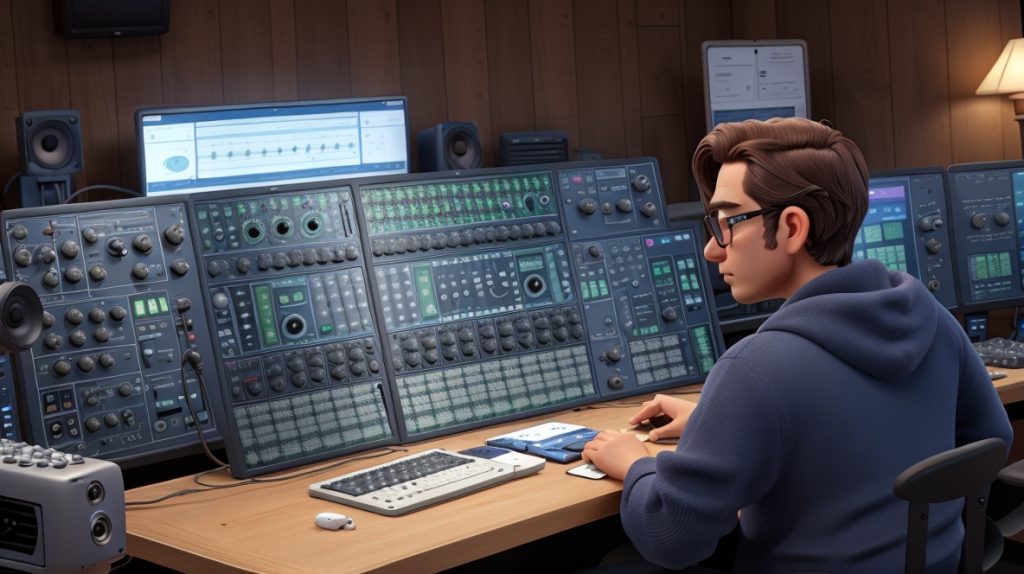Mixing in music is the process of blending individual sounds, like instruments and vocals, to create a cohesive and balanced final track. It’s like putting together all the puzzle pieces to make the music sound like a complete song. A mixing engineer is the person who does this job. They use tools like EQ, compression, reverb, and panning to adjust the levels and effects of each component in the music.
The mixing engineer’s goal is to make sure all the parts work together smoothly, reducing any conflicts between them. They might also add special effects or make adjustments to emphasize important elements of the song. In some cases, they could even enhance the drum sounds by adding extra samples or removing unnecessary instrument parts.
Additionally, mixing isn’t just about technical adjustments. It’s also about capturing the emotions and feelings of the song and bringing it to life. The mixing engineer takes a bunch of individual tracks and transforms them into a unified and powerful song.
Mixing is different from mastering, even though both terms are often used interchangeably. Mixing involves blending the individual tracks while mastering focuses on preparing the final mixed track for distribution.
For instance, in a recording session, each instrument or voice is recorded separately. Later, a mixing engineer takes these individual recordings and combines them using special software. They adjust things like volume, effects, and balance to create a final, polished mix.
While there’s no perfect mix, some albums are widely praised for their exceptional mixing. One standout example is Michael Jackson’s ‘Thriller,’ which is famous for its incredibly well-balanced and crisp sound. Mixing engineer Bruce Swedien, who worked on this project, is considered a legend in the field for his outstanding contributions to the album.

